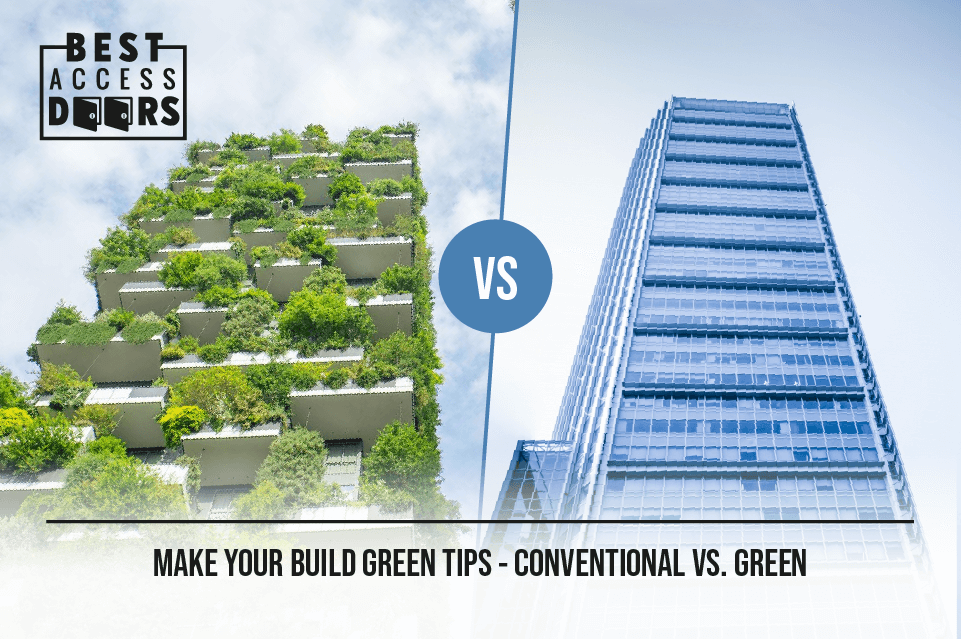Make Your Build Green Tips - Conventional vs. Green
Posted by Best Access Doors on 29th May 2019
Are you looking to promote sustainable building? Maybe you are looking to incorporate green building practices into your project – did you know there are two alternatives?
Conventional and green, both practices offering benefits and disadvantages. From budget to the actual install and application, there are benefits that some contractors will take on and some that they will avoid. Best Access Doors, looks at the way conventional and green building can impact a project, no matter how big or small.
Insulation
Insulation in a conventional building is typically installed with the use of foam boards. Foam boards are made with non-recycled materials, which is why they are a higher density and are stiff and firm. A conventional approach to building uses material that is not typically biodegradable nor recycled; therefore, they will typically find their way into landfills.
With green building and approaches, material that is used with insulation are made with biodegradable material or recycled material. These materials include everything from wood to wool fiber's. These materials are a great way to incorporate sustainable practices but also they will more often than not be a great way to insulate and absorb sound better than traditional panel boards.
Structure
Typically, conventional buildings have used bricks, concrete or steel. These materials have been around for centuries, and in a way, they are somewhat sustainable because they have lasted as long as they have. In a way, this is also hard on the environment because it doesn’t break down and will end up just taking space. This is apparent in some buildings that have become incorporated into modern buildings and structures.
Today though, green buildings are incorporating conventional with green. From glass to wood and even stone, these sustainable materials promote longevity in the building and structure but also promote the use of the surroundings. For example, Best Access Doors offers LEED rated access panels which means that the materials and the design promote sustainability and are made with material that is either recycled or a combination of conventional and green.
Design
The main difference between conventional and green buildings is that when it comes to the design, conventional buildings are done with the intent of maximizing functionality while being able to also replicate. Essentially, a design that will be the cookie cutter mold that builders anywhere in the world can use and replicate.
Green designs, however, everyone from the designers, contractor and builder will look at ways of having as little impact on the surroundings and using materials that will not impact the environment.
Budget
Since green building is fairly new, it can be costly in comparison to conventional building and practices. Green projects can get costly, but over time, as the material becomes more prevalent and accessible, the price will eventually decrease, which is why most companies, builders and contractors will find ways of still incorporating green approaches to their project because while it may be costly, the benefits sometimes outweigh those costs.
Mixing It Up
Conventional and green building practices, it is hard to determine which is better because the reality is they both work hand in hand. They complement one another. For example, our array of access panels is designed with the best of both worlds because we understand sometimes we want the strength of steel or metal but the ability to conceal and personalize like drywall or plaster.
At Best Access Doors, check out our products of access panels that combine materials of metal and plaster – not sure which is the panel for you or how to promote sustainable practices in your project? Contact us today and our knowledgeable staff will be ready to help!
Share our story - the 2025 version is available

